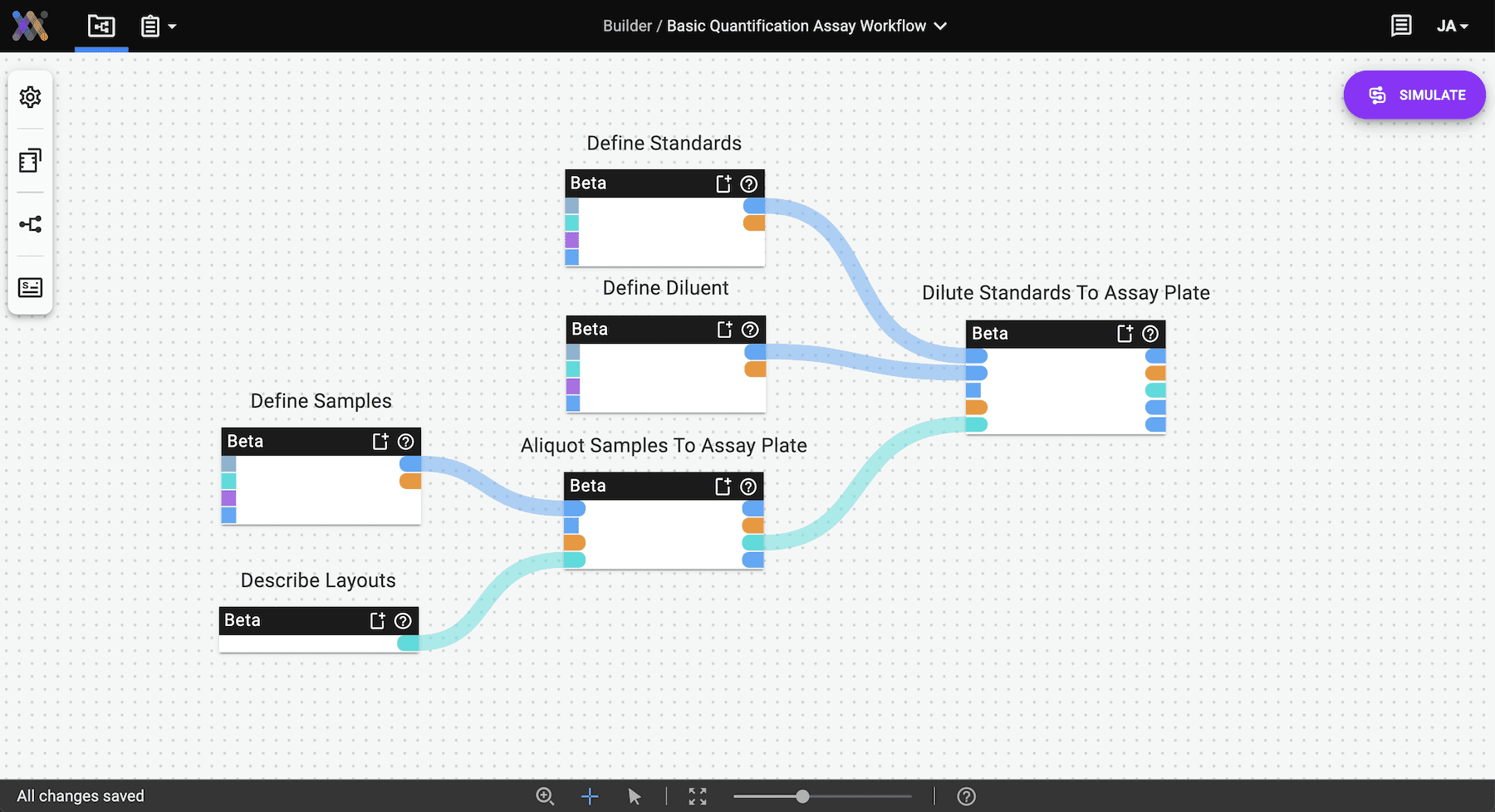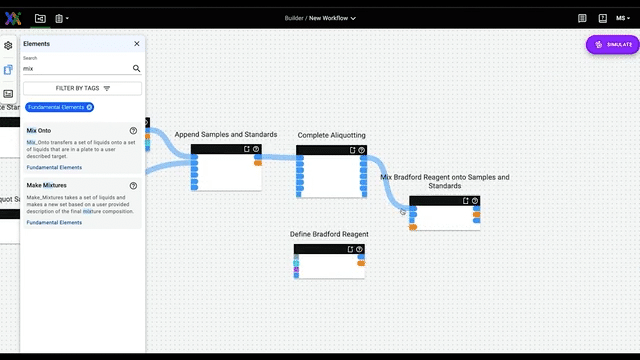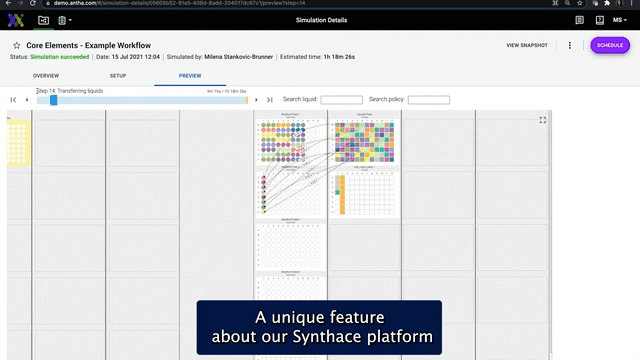Liquid handling automation has always required user programming to execute even the simplest operations. That is, until now.
Because of the fundamental difference in language between us scientists and our automation, the flexibility in describing our experimental steps in biological terms is lost in translation when we begin scripting liquid movements between well locations.
Here, at Synthace, we realized that we needed a better way to talk to our automation: a more intuitive, flexible solution that would save scientists valuable time and resources, while still letting them speak science instead of having to learn complicated scripting. So, we built this solution ourselves - the Synthace Life Sciences R&D Cloud platform - empowering scientists to see automation as a field of opportunities and unleash its full potential.
Our platform brings extra flexibility and playfulness into automated biology. It goes beyond democratizing automation: it allows scientists to envision bolder experiments than ever before and effectively share their findings with the wider community. Regardless of your level of experience with automation and the complexity of the task at hand, you can easily automate your experiments in a digitalized lab, from design and execution through to data analysis and insight sharing.
Set Yourself Up for Success: Start with the Core Elements
The core of our platform is a simple library of experimental building blocks that can be connected, swapped out, and reshuffled to create automated workflows. We created this set of core building blocks, called the Core Elements, to cover different types of fundamental operations: aliquoting, diluting or mixing liquids, describing plate layouts, and more. Scientists can use these building blocks to create experiments of any complexity depending on their ideas and needs, whereby they have the freedom to envision and realize more ambitious R&D instead of focusing on programming their devices.

Let’s take the example of a Bradford Protein Quantification assay and build it using the Synthace platform Core Elements (see the video below). A Bradford assay contains a set of liquid operations that include dilution of standards, aliquoting of samples and diluted standards, and mixing of a reagent onto the aliquoted liquids. Because each Core Element defines such simple operations, it becomes easy to build the whole workflow logically from scratch, step-by-step, just like you would in your lab book.
Experiments can also be scaled up and down with the platform’s automated planning feature. When you want to change the number of samples, you do not need to worry about re-scripting your workflows to accommodate that: simply specify the new sample number within the platform and it will automatically update the workflow in seconds.
Scientists can also switch between different experiments with ease. For example, by simply replacing protein samples and standards with DNA and the Bradford reagent with PicoGreen, the Bradford workflow is instantly transformed into a PicoGreen DNA Quantification assay.
Our customers have been using our platform and the Core Elements to build powerful, flexible workflows, ranging from cherry-picking samples on the basis of liquid properties to complex logical operations based on input sample metadata.

Users can easily configure each Core Element by modifying their parameters, and they can do so by typing in plain text and using familiar biological terms. For example, they can select user-defined liquids or pick concentration units from dropdown menus. Color-coded connections between elements guide the user in building the workflow, intuitively transferring parameter information between experimental steps.
Simulate and Preview Your Experiment Before Stepping into the Lab
Once a workflow is built, the experiment can be simulated and previewed in silico, automatically saving all data and metadata of that simulation in the cloud for future reference. In this way, scientists can check and verify their methods prior to execution without needing to step foot in the lab or block the use of the automation by scripting directly in vendor software.
The Synthace platform is hardware agnostic: the same workflow can be simulated and executed on different devices, achieving the same results without further reprogramming. You no longer need to interface with a plethora of different vendor software - Synthace acts as a level of abstraction, providing a single comprehensive solution for it all!

Users can simulate their workflows in silico before physical execution in the lab. The simulation produces an interactive, step-by-step preview of the experiment, with every liquid transfer specified at any time point in the process. Detailed information about each transfer is displayed on the right-hand side.
What’s Next?
Our solution will not be limited to experimental planning and execution. As a Life Sciences R&D Cloud, we’re developing a powerful data layer for our Core Elements to enable automated data ingestion, structuring, analysis, and contextualization.
We believe that automation and complete, high-quality data are key in advancing life sciences R&D. With the flexibility of our platform and the built-in Core Elements, automation becomes accessible to all scientists in their day-to-day work, allowing them to explore and leverage their automation solutions to the extent they couldn’t imagine before. They can finally move away from experimental logistics and complicated scripting and instead invest their precious time into envisioning bolder experiments, drawing conclusions from their results, and sharing their insights with colleagues for accelerated R&D pipelines!
To learn more about our platform and the Core Elements, click here
Interested in collaborating with us? Drop us an email
James Arpino, PhD
Dr James Arpino, aka JAJA, is a Product Manager at Synthace, where he leads the product development of experiment design and planning. In his seven years at the company he has become an evangelist and expert in transformational multifactorial methods in biology, including DOE.
Other posts you might be interested in
View All PostsWhy Quality by Design (QbD) is vital for pharmaceutical R&D

Why Design of Experiments (DOE) is important for biologists

DOE in one place with Synthace's accessible workflow

